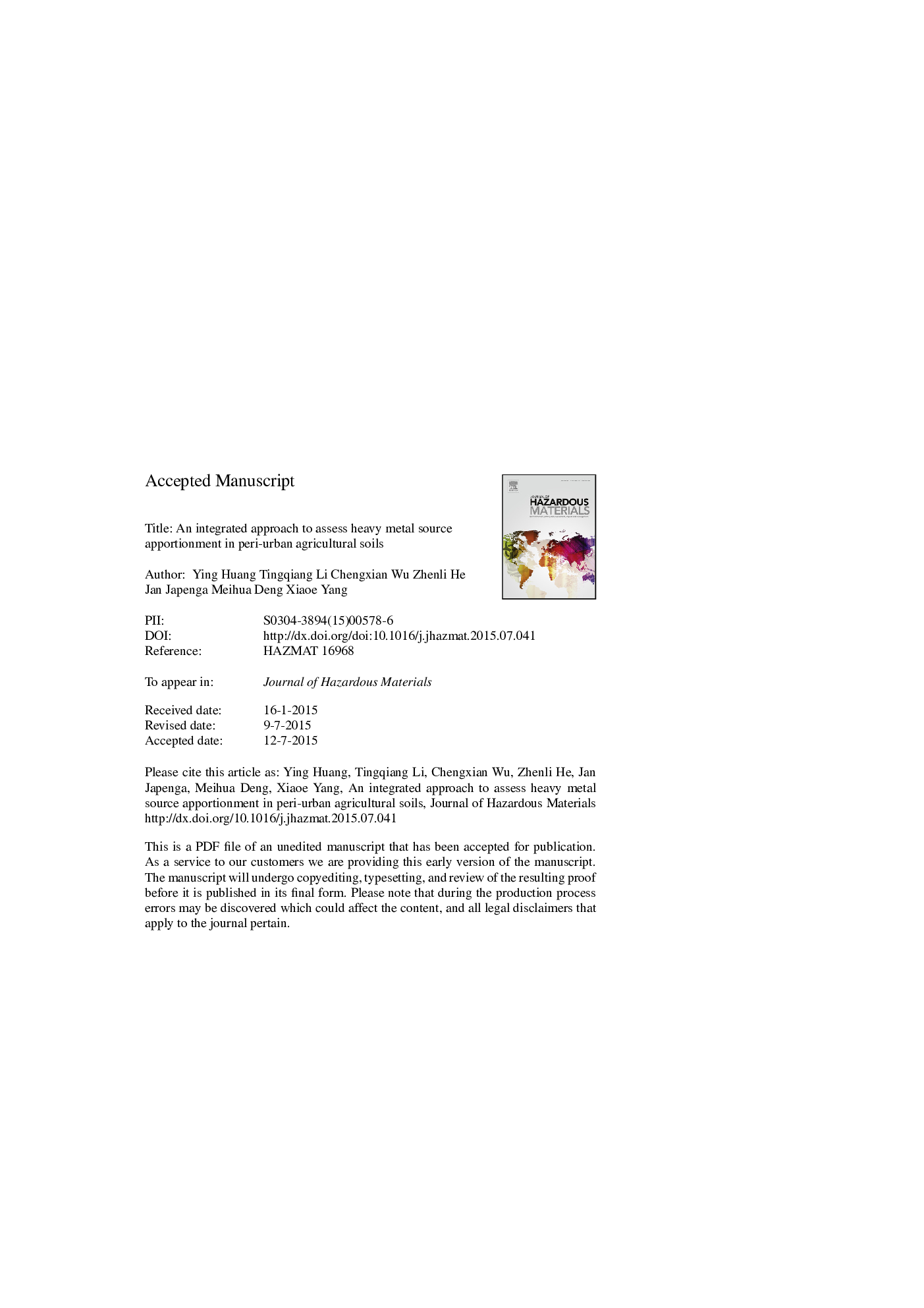| Article ID | Journal | Published Year | Pages | File Type |
|---|---|---|---|---|
| 575954 | Journal of Hazardous Materials | 2015 | 29 Pages |
Abstract
Three techniques (Isotope Ratio Analysis, GIS mapping, and Multivariate Statistical Analysis) were integrated to assess heavy metal pollution and source apportionment in peri-urban agricultural soils. The soils in the study area were moderately polluted with cadmium (Cd) and mercury (Hg), lightly polluted with lead (Pb), and chromium (Cr). GIS Mapping suggested Cd pollution originates from point sources, whereas Hg, Pb, Cr could be traced back to both point and non-point sources. Principal component analysis (PCA) indicated aluminum (Al), manganese (Mn), nickel (Ni) were mainly inherited from natural sources, while Hg, Pb, and Cd were associated with two different kinds of anthropogenic sources. Cluster analysis (CA) further identified fertilizers, waste water, industrial solid wastes, road dust, and atmospheric deposition as potential sources. Based on isotope ratio analysis (IRA) organic fertilizers and road dusts accounted for 74-100% and 0-24% of the total Hg input, while road dusts and solid wastes contributed for 0-80% and 19-100% of the Pb input. This study provides a reliable approach for heavy metal source apportionment in this particular peri-urban area, with a clear potential for future application in other regions.
Related Topics
Physical Sciences and Engineering
Chemical Engineering
Chemical Health and Safety
Authors
Ying Huang, Tingqiang Li, Chengxian Wu, Zhenli He, Jan Japenga, Meihua Deng, Xiaoe Yang,
